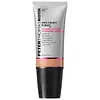What's inside
What's inside
 Key Ingredients
Key Ingredients

 Benefits
Benefits

 Concerns
Concerns

 Ingredients Side-by-side
Ingredients Side-by-side

Water
Skin ConditioningGlycerin
HumectantButylene Glycol
HumectantIsononyl Isononanoate
EmollientCitrus Aurantium Bergamia Fruit Water
Skin ConditioningDimethicone
EmollientButyrospermum Parkii Butter
Skin ConditioningCaprylic/Capric Triglyceride
MaskingGlyceryl Stearate
EmollientPolyglyceryl-6 Distearate
EmulsifyingCetearyl Alcohol
EmollientSorbitan Stearate
EmulsifyingIsostearyl Alcohol
EmollientMica
Cosmetic ColorantButylene Glycol Cocoate
EmulsifyingBacillus/Soybean Ferment Extract
Skin ConditioningDiamond Powder
AbrasiveNiacinamide
SmoothingSodium Hyaluronate
HumectantSodium Hydroxide
BufferingCitric Acid
BufferingGlutamic Acid
HumectantGlycine
BufferingHistidine
HumectantIsoleucine
Skin ConditioningLeucine
Skin ConditioningLysine
Skin ConditioningPhenylalanine
MaskingAlanine
MaskingArginine
MaskingProline
Skin ConditioningSerine
MaskingThreonine
Tyrosine
MaskingValine
MaskingSodium Phytate
Sodium Lactate
BufferingSilica
AbrasiveEthylcellulose
Potassium Sorbate
PreservativeSodium Benzoate
MaskingHydroxyethylcellulose
Emulsion StabilisingAspartic Acid
MaskingDisodium Phosphate
BufferingPolysorbate 60
EmulsifyingSodium Phosphate
BufferingPolysilicone-11
Titanium Dioxide
Cosmetic ColorantEthylhexylglycerin
Skin ConditioningDimethicone Crosspolymer
Emulsion StabilisingCarbomer
Emulsion StabilisingPolymethylsilsesquioxane
Iron Oxides
Phenoxyethanol
PreservativeWater, Glycerin, Butylene Glycol, Isononyl Isononanoate, Citrus Aurantium Bergamia Fruit Water, Dimethicone, Butyrospermum Parkii Butter, Caprylic/Capric Triglyceride, Glyceryl Stearate, Polyglyceryl-6 Distearate, Cetearyl Alcohol, Sorbitan Stearate, Isostearyl Alcohol, Mica, Butylene Glycol Cocoate, Bacillus/Soybean Ferment Extract, Diamond Powder, Niacinamide, Sodium Hyaluronate, Sodium Hydroxide, Citric Acid, Glutamic Acid, Glycine, Histidine, Isoleucine, Leucine, Lysine, Phenylalanine, Alanine, Arginine, Proline, Serine, Threonine, Tyrosine, Valine, Sodium Phytate, Sodium Lactate, Silica, Ethylcellulose, Potassium Sorbate, Sodium Benzoate, Hydroxyethylcellulose, Aspartic Acid, Disodium Phosphate, Polysorbate 60, Sodium Phosphate, Polysilicone-11, Titanium Dioxide, Ethylhexylglycerin, Dimethicone Crosspolymer, Carbomer, Polymethylsilsesquioxane, Iron Oxides, Phenoxyethanol
Cyclopentasiloxane
EmollientWater
Skin ConditioningDimethicone Crosspolymer
Emulsion StabilisingLauryl PEG/PPG-18/18 Methicone
Skin ConditioningMethyl Methacrylate Crosspolymer
Polymethylsilsesquioxane
Dimethicone/Vinyl Dimethicone Crosspolymer
Skin ConditioningPolysilicone-11
CI 77891
Cosmetic ColorantDimethyl Isosorbide
SolventPolymethyl Methacrylate
Phenoxyethanol
PreservativePEG/PPG-18/18 Dimethicone
EmulsifyingIsopentyldiol
HumectantEthylhexyl Palmitate
EmollientCapryloyl Salicylic Acid
ExfoliatingChlorphenesin
AntimicrobialLavandula Angustifolia Oil
MaskingEthylhexylglycerin
Skin ConditioningMelaleuca Alternifolia Leaf Oil
AntioxidantSilica
AbrasiveTriethoxycaprylylsilane
Hdi/Trimethylol Hexyllactone Crosspolymer
Dimethyl Oxobenzo Dioxasilane
Skin ConditioningSilica Dimethyl Silylate
EmollientTrifolium Pratense Flower Extract
AstringentLaureth-12
EmulsifyingIron Oxides
Cyclopentasiloxane, Water, Dimethicone Crosspolymer, Lauryl PEG/PPG-18/18 Methicone, Methyl Methacrylate Crosspolymer, Polymethylsilsesquioxane, Dimethicone/Vinyl Dimethicone Crosspolymer, Polysilicone-11, CI 77891, Dimethyl Isosorbide, Polymethyl Methacrylate, Phenoxyethanol, PEG/PPG-18/18 Dimethicone, Isopentyldiol, Ethylhexyl Palmitate, Capryloyl Salicylic Acid, Chlorphenesin, Lavandula Angustifolia Oil, Ethylhexylglycerin, Melaleuca Alternifolia Leaf Oil, Silica, Triethoxycaprylylsilane, Hdi/Trimethylol Hexyllactone Crosspolymer, Dimethyl Oxobenzo Dioxasilane, Silica Dimethyl Silylate, Trifolium Pratense Flower Extract, Laureth-12, Iron Oxides
Ingredients Explained
These ingredients are found in both products.
Ingredients higher up in an ingredient list are typically present in a larger amount.
Dimethicone Crosspolymer is a silicone created by modifying dimethicone with hydrocarbon side chains. Due to its large size, it does not penetrate skin. It is considered non-occlusive.
Dimethicone Crosspolymer is used to stabilize and thicken products. It also helps give products a silky feel.
Ethylhexylglycerin (we can't pronounce this either) is commonly used as a preservative and skin softener. It is derived from glyceryl.
You might see Ethylhexylglycerin often paired with other preservatives such as phenoxyethanol. Ethylhexylglycerin has been found to increase the effectiveness of these other preservatives.
Phenoxyethanol is a preservative that has germicide, antimicrobial, and aromatic properties. Studies show that phenoxyethanol can prevent microbial growth. By itself, it has a scent that is similar to that of a rose.
It's often used in formulations along with Caprylyl Glycol to preserve the shelf life of products.
Polymethylsilsesquioxane is a silicone used as a film forming agent.
When applied to the skin, this ingredient creates an invisible film on the surface. This film still allows oxygen to pass through, but prevents moisture from escaping. This can help condition and hydrate the skin. It also leaves a silky feel when applied.
Polymethylsilsesquioxane has not been shown to clog pores. It has been deemed safe to use up to 55%, but most cosmetics use much less.
If you have concerns about using this ingredient, we recommend speaking with a professional.
Learn more about PolymethylsilsesquioxanePolysilicone-11 is a film-forming silicone that creates a non-tacky and matte finish on the skin. It's commonly used to improve texture, absorb excess oil, and help active ingredients spread evenly.
Due to its "rubber-like" structure, it stays on the skin's surface instead of being absorbed. On the skin, it creates a flexible layer that enhances wearability and stability.
Silica, also known as silicon dioxide, is a naturally occurring mineral. It is used as a fine, spherical, and porous powder in cosmetics.
Though it has exfoliant properties, the function of silica varies depending on the product.
The unique structure of silica enhances the spreadability and adds smoothness, making it a great texture enhancer.
It is also used as an active carrier, emulsifier, and mattifier due to its ability to absorb excess oil.
In some products, tiny microneedles called spicules are made from silica or hydrolyzed sponge. When you rub them in, they lightly polish away dead skin layers and enhance the penetration of active ingredients.
Learn more about SilicaWater. It's the most common cosmetic ingredient of all. You'll usually see it at the top of ingredient lists, meaning that it makes up the largest part of the product.
So why is it so popular? Water most often acts as a solvent - this means that it helps dissolve other ingredients into the formulation.
You'll also recognize water as that liquid we all need to stay alive. If you see this, drink a glass of water. Stay hydrated!
Learn more about WaterThis ingredient is a combination of red, black, and yellow iron oxide pigments. This combination of colors is usually found in foundation, because it results in a "skin" color.